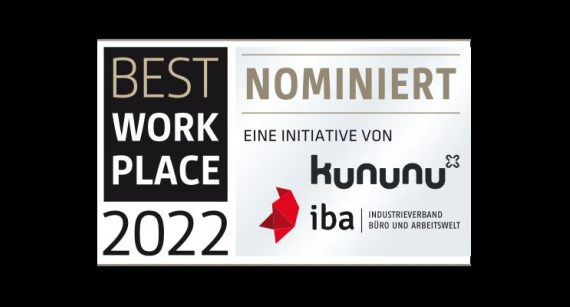
#Service Designer #service design & concept #service design

17. Jan. 2022 |
- min Lesezeit
AT DPM, we see our workforce development flourishing continuously, with many new people joining the team. And as you probably already know, we value people and culture very high here at DPM. Thus, for a long time, the cultural fit has been just as an important part of our hiring process as the technical fit.
A cultural fit is a step in the hiring process that every company undergoes at one point, either deliberately or not.
In many cases corporate culture it is not defined in any way, at least not on paper. However, it is reflected in how people interact, how teams work together, and how hierarchies and workplace politics are dealt with. Furthermore, culture has a direct impact on how tasks and projects are approached, as well as how clients perceive their interactions with a business.
At DPM, we believe that an open and collaborative culture leads to higher levels of effectiveness and productivity, which benefits us internally as a team and externally in the projects we deliver for our clients. As a result, we aim to identify co-workers who share this mindset during the recruiting process. By ensuring that applicants are comfortable in our working environment, we prevent losing new employees during the probationary period.
A first step to a deliberate cultural fit along the hiring process would be defining your company’s values. That way, it allows you to pinpoint what your company stands for.
Once your values are defined, this information can be used in the hiring process. Now, it is pretty straightforward to develop a list of “No-Gos” for your company: personality and work ethic traits that don’t work for your business. With this list, applications can be filtered initially to reduce the waste of time and effort on both sides. In this step, motivational letters can be a great tool for assessment.
Of course, every business has to decide with how much importance they want to handle this topic while hiring new people.
Characteristics of a potential employee overlap greatly with the company culture. The person and the organisation have similar values and beliefs.
A potential employee and the company both have something to offer that the other side does not have. For example, an employee could have special qualifications, but their values differ from the companies. Still, or just because of this, this person can be an enriching addition to the company.
Cultural fit can be used not only for thinning out the number of applications but it can also be used to solidify the fit of a potential employee in the process of hiring. A catalogue of questions, aligned with the company culture, can be consulted during an interview to find out more about the person’s beliefs and work ideas. Also keep in mind, that a persons skillset is pretty easy to evolve. Though it is pretty hard, if not impossible in some cases, to align personal beliefs and values to fit your culture, if they are fundamentally different from the start.
The last two years have shown in particular how fundamentally important it is for companies to have a functioning and motivating culture. It is not only about having free drinks in the office or offering employees Christmas paycheck bonuses. It is more about growing a happy and supportive atmosphere among your workforce that motivates people to get up in the morning without hating the job they do. People will happily go the extra mile to satisfy every customer need, even when they’re technically not obligated to.
Investing in good company culture is not only important for personal fulfilment, happiness and loyalty, it will ultimately also be beneficial for the financial and business side, since, as we all know, only really happy employees are productive employees.
At DPM, we always have had a modern and human-focused culture with flat hierarchies and obligatory free mate drinks. We recently took our time to define our company values. You can take a look at them on our about page.
Some tips on how to hire based on cultural fit:
We look out for indications from the job applications themselves and how the prospective candidate can be a valuable addition to the team - not only based on their skill sets but also based on their character, values and attitude.
We have a chat with the candidate on what DPM stands for in terms of work culture and the vibe that the candidate would get to add to our wonderful family here at DPM.
We work with a catalogue of questions aligned to our company values. Although we select some questions for each applicant individually, according to our first perception through the documents we received from them. And then we can just drop in some of these questions during some small talk or other conversations over the nice cup of coffee we’re having.
So for the cultural fit round, we like to meet our new potential team members in one of our favourite coffee shops around the city*. This way, the unnecessary pressure of this interview situation is reduced a lot. People can enjoy their time talking and being more like they really are.
What happens next? Each interview step is documented by DPM staff using a digital feedback sheet. At the end of the interview process, all employees involved in the recruitment process discuss the individual interviews and decide whether the candidate should join the team. All interview steps play an equal role on our checklist when hiring. This makes our hiring process more time-consuming, but we believe that recruiting is a big investment in our company. After all, one single candidate could improve our employee retention rate, foster internal collaboration and teamwork, and massively increased productivity in the long run.
*COVID Disclaimer: Due to the corona pandemic, we also have been doing our cultural fit roud via Zoom since it is the safest option and would want our candidates to be at ease and be comfortable.
We are among the top ten small to medium-sized “workplaces with a feel-good atmosphere” according to a voting done by kununu and iba this year. The Best Workplace Award honours companies that offer a genuine feel-good atmosphere. It is presented by kununu, the leading online platform for employer ratings in German-speaking countries, and the Industry Association for Offices and the Working World (IBA).

Best Workplace Award 2022 by kununu and "Industrieverband Büro und Arbeitswelt"
